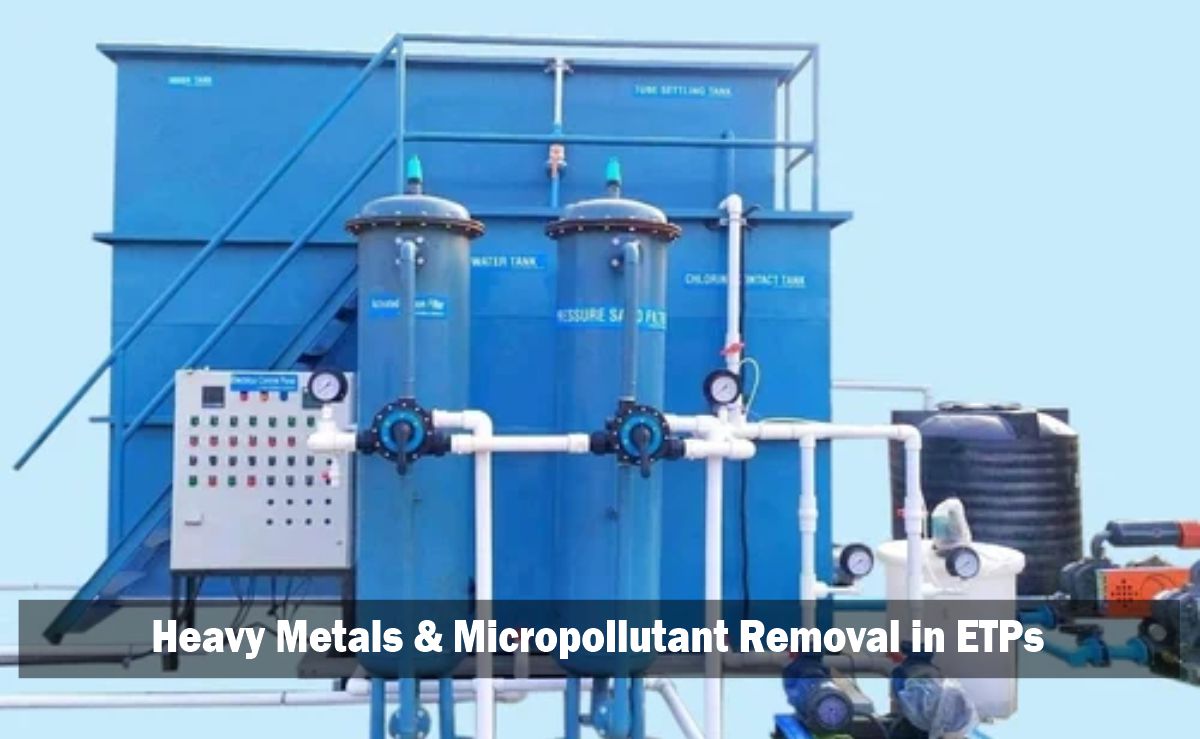How Are Heavy Metals and Micropollutants Removed in ETPs?
Effluent Treatment Plants (ETPs) play a crucial role in managing industrial wastewater before it’s released into natural water bodies. The presence of heavy metals like lead, mercury, cadmium, and arsenic, along with micropollutants such as pharmaceuticals, pesticides, and personal care products, poses a serious threat to aquatic ecosystems and human health. Their removal is not only essential for environmental protection but also for regulatory compliance.
3D AQUA, a trusted name in effluent treatment plant manufacturing, is known for designing systems that ensure safe, efficient, and reliable removal of contaminants. This article explains the step-by-step processes used in ETPs to remove heavy metals and micropollutants, highlighting the best available technologies adopted by industry leaders.
Understanding Heavy Metals and Micropollutants
Before delving into the treatment processes, it’s important to understand what these contaminants are:
- Heavy Metals: Inorganic pollutants that accumulate in living organisms. Common sources include electroplating, mining, textile dyeing, and battery manufacturing.
- Micropollutants: Organic or synthetic chemicals that occur in trace amounts. These may include hormones, antibiotics, detergents, and microplastics.
Because these substances persist in the environment and may bioaccumulate, their removal is a top priority.
1. Chemical Precipitation Methods
Chemical precipitation transforms soluble heavy metals into insoluble compounds. These solids can then be physically removed.
a. Hydroxide Precipitation
- Involves raising the pH of wastewater using lime or sodium hydroxide.
- Metal ions react with hydroxide ions to form insoluble metal hydroxides.
- The solids settle in a clarifier and are removed as sludge.
- Effective for metals like lead, zinc, nickel, and chromium.
b. Sulfide Precipitation
- Uses sodium sulfide or hydrogen sulfide to form metal sulfides.
- Metal sulfides have very low solubility, making this method efficient for mercury, silver, and cadmium.
- Faster settling time compared to hydroxide precipitation.
Benefits:
- Cost-effective
- Easy to implement
- Reduces metal concentrations to regulatory levels
2. Adsorption Techniques
Adsorption is the physical or chemical adhesion of pollutants onto a solid surface. It’s particularly effective for low-concentration contaminants.
a. Activated Carbon Adsorption
- Activated carbon has a large surface area.
- Adsorbs organic micropollutants like pesticides, phenols, and endocrine-disrupting compounds.
- Works well in polishing stages of treatment.
b. Ion Exchange Resins
- Synthetic polymer beads that exchange harmless ions (e.g., Na+, H+) with toxic metal ions (e.g., Pb2+, Cu2+).
- Highly selective and efficient.
- Regenerable using brine or acid solutions.
Benefits:
- High removal efficiency for trace elements
- Suitable for polishing treated effluents
- Reusable and sustainable options available
3. Membrane Filtration Processes
Membranes act as physical barriers that separate contaminants based on size, charge, and chemical properties.
a. Ultrafiltration (UF)
- Removes suspended solids, colloids, bacteria, and some viruses.
- Pore size ranges from 0.01 to 0.1 microns.
- Used as a pre-treatment for Reverse Osmosis.
b. Nanofiltration (NF)
- Removes divalent and larger monovalent ions.
- Suitable for reducing hardness and moderate levels of organics.
c. Reverse Osmosis (RO)
- High-pressure filtration that removes 99% of dissolved salts, heavy metals, and micropollutants.
- Membranes with pore size around 0.0001 microns.
- Produces high-purity permeate suitable for reuse.
Benefits:
- High removal efficiency
- Compact systems
- Can handle variable influent quality
4. Advanced Oxidation Processes (AOPs)
AOPs are chemical treatments that use powerful oxidants to break down complex and non-biodegradable organic contaminants.
a. Ozonation
- Ozone is a strong oxidizer that reacts with aromatic compounds, breaking them into simpler, less harmful molecules.
- Effective for removing color, odor, and pharmaceutical residues.
b. UV-Hydrogen Peroxide Treatment
- Combines UV light with hydrogen peroxide to generate hydroxyl radicals.
- Destroys organic pollutants and microorganisms.
- Suitable for tertiary treatment stages.
c. Fenton’s Reagent
- Uses a mixture of hydrogen peroxide and ferrous iron to generate hydroxyl radicals.
- Particularly effective for phenols, dyes, and hydrocarbons.
Benefits:
- Breaks down persistent organics
- Enhances biodegradability
- Complements biological treatment
5. Biological Treatment (For Organic Micropollutants)
Although heavy metals are non-biodegradable, many micropollutants can be partially removed using biological methods.
a. Activated Sludge Process
- Microorganisms degrade biodegradable organics in an aeration tank.
- Can reduce levels of hormones, antibiotics, and surfactants.
b. Membrane Bioreactors (MBRs)
- Combines biological treatment with ultrafiltration.
- Provides high-quality effluent suitable for reuse.
c. Biochar Addition
- Biochar acts as an adsorbent within biological reactors.
- Improves removal efficiency for hydrophobic micropollutants.
Sludge Handling and Disposal
The sludge produced during treatment may contain concentrated contaminants. Proper handling is essential.
- Dewatering: Using centrifuges or filter presses.
- Stabilization: Chemical or biological treatment to neutralize hazards.
- Safe Disposal: Landfilling in hazardous waste facilities or incineration.
Integrated Treatment Approach
No single method can handle all pollutants. ETPs often use a combination of methods in a multi-stage treatment train:
- Primary Treatment: Screening, sedimentation
- Secondary Treatment: Biological oxidation, clarification
- Tertiary Treatment: Membrane filtration, AOPs, adsorption
- Sludge Treatment: Dewatering, disposal
3D AQUA’s integrated systems ensure the highest removal efficiency while remaining cost-effective and easy to operate.
Final Thoughts
The question “How are heavy metals and micropollutants removed in ETPs?” is more than a technical query—it’s central to environmental protection. 3D AQUA’s engineering solutions are designed to meet the highest standards of pollutant removal. Whether you’re in manufacturing, textiles, pharmaceuticals, or any sector generating complex effluent, our team offers custom-built treatment systems tailored to your needs.
To learn more about ETP solutions or request a consultation, contact us today:
Phone: +91-6262629090
Email: info@3daqua.in

